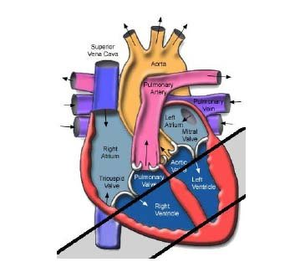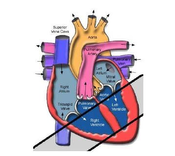Information
- Publication Type: Master Thesis
- Workgroup(s)/Project(s):
- Date: August 2005
- First Supervisor:
Abstract
Segmentation of volumetric medical data is extremely time-consuming if done manually. This is the reason why currently great efforts are being made to develop algorithms for automatic segmentation. Model based techniques represent one very promising approach. A model representing the object of interest is matched with unknown data. During the matching process the model’s shape and additional properties are varied in order to iteratively improve the match. As soon as the model fits sufficiently well to the data, the properties of the model can be mapped to the data and so a segmentation is derived. Recently the segmentation of cardiac magnetic resonance images (MRI) has been of great interest. In this work we outline some of the methods proposed to solve the problem of cardiac segmentation. We review Active Appearance Models (AAMs) which are a special type of deformable models. AAMs rule changes in shape and texture using statistical information obtained from a data base of representative examples. We describe the theory behind AAMs with special focus on 3D AAMs. These are applicable to volumetric medical image data. Our implementation of 3D AAMs is outlined and the results obtained for 3D segmentation of the left cardiac ventricle are presented.Additional Files and Images
Weblinks
No further information available.BibTeX
@mastersthesis{zambal-2005-3dact,
title = "3D Active Appearance Models for Segmentation of Cardiac MRI
Data",
author = "Sebastian Zambal",
year = "2005",
abstract = "Segmentation of volumetric medical data is extremely
time-consuming if done manually. This is the reason why
currently great efforts are being made to develop algorithms
for automatic segmentation. Model based techniques represent
one very promising approach. A model representing the object
of interest is matched with unknown data. During the
matching process the model’s shape and additional
properties are varied in order to iteratively improve the
match. As soon as the model fits sufficiently well to the
data, the properties of the model can be mapped to the data
and so a segmentation is derived. Recently the segmentation
of cardiac magnetic resonance images (MRI) has been of great
interest. In this work we outline some of the methods
proposed to solve the problem of cardiac segmentation. We
review Active Appearance Models (AAMs) which are a special
type of deformable models. AAMs rule changes in shape and
texture using statistical information obtained from a data
base of representative examples. We describe the theory
behind AAMs with special focus on 3D AAMs. These are
applicable to volumetric medical image data. Our
implementation of 3D AAMs is outlined and the results
obtained for 3D segmentation of the left cardiac ventricle
are presented.",
month = aug,
address = "Favoritenstrasse 9-11/E193-02, A-1040 Vienna, Austria",
school = "Institute of Computer Graphics and Algorithms, Vienna
University of Technology ",
URL = "https://www.cg.tuwien.ac.at/research/publications/2005/zambal-2005-3dact/",
}

 PDF
PDF

